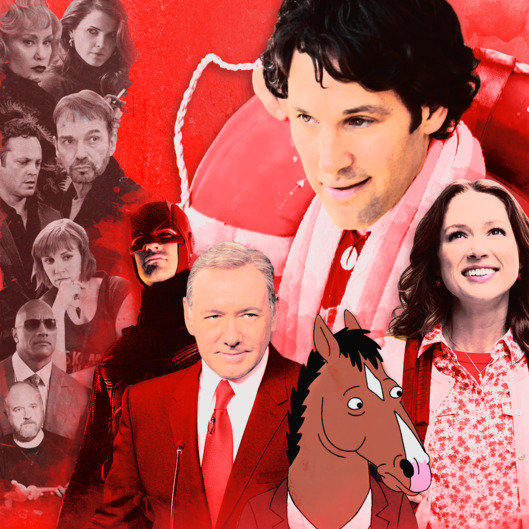This is my friend Jeremy.
“When you have it,” he says, “you have to keep using it. When it’s gone, it’s like, ‘Oh good, I can go back to my life now.’ I would stay up all weekend and go to these sex parties and then feel like shit until Wednesday. About two years ago I switched to cocaine because I could work the next day.”
Jeremy is telling me this from a hospital bed, six stories above Seattle. He won’t tell me the exact circumstances of the overdose, only that a stranger called an ambulance and he woke up here.
Jeremy is not the friend I was expecting to have this conversation with. Until a few weeks ago, I had no idea he used anything heavier than martinis. He is trim, intelligent, gluten-free, the kind of guy who wears a work shirt no matter what day of the week it is. The first time we met, three years ago, he asked me if I knew a good place to do CrossFit. Today, when I ask him how the hospital’s been so far, the first thing he says is that there’s no Wi-Fi, he’s way behind on work emails.
“The drugs were a combination of boredom and loneliness,” he says. “I used to come home from work exhausted on a Friday night and it’s like, ‘Now what?’ So I would dial out to get some meth delivered and check the Internet to see if there were any parties happening. It was either that or watch a movie by myself.”
1.That’s not his real name. Only a few of the names of the gay men in this article are real.
Jeremy[1] is not my only gay friend who’s struggling. There’s Malcolm, who barely leaves the house except for work because his anxiety is so bad. There’s Jared, whose depression and body dysmorphia have steadily shrunk his social life down to me, the gym and Internet hookups. And there was Christian, the second guy I ever kissed, who killed himself at 32, two weeks after his boyfriend broke up with him. Christian went to a party store, rented a helium tank, started inhaling it, then texted his ex and told him to come over, to make sure he’d find the body.
For years I’ve noticed the divergence between my straight friends and my gay friends. While one half of my social circle has disappeared into relationships, kids and suburbs, the other has struggled through isolation and anxiety, hard drugs and risky sex.
None of this fits the narrative I have been told, the one I have told myself. Like me, Jeremy did not grow up bullied by his peers or rejected by his family. He can’t remember ever being called a faggot. He was raised in a West Coast suburb by a lesbian mom. “She came out to me when I was 12,” he says. “And told me two sentences later that she knew I was gay. I barely knew at that point.”
 This is a picture of me and my family when I was 9. My parents still claim that they had no idea I was gay. They’re sweet.
This is a picture of me and my family when I was 9. My parents still claim that they had no idea I was gay. They’re sweet.
Jeremy and I are 34. In our lifetime, the gay community has made more progress on legal and social acceptance than any other demographic group in history. As recently as my own adolescence, gay marriage was a distant aspiration, something newspapers still put in scare quotes. Now, it’s been enshrined in law by the Supreme Court. Public support for gay marriage has climbed from 27 percent in 1996 to 61 percent in 2016. In pop culture, we’ve gone from “Cruising” to “Queer Eye” to “Moonlight.” Gay characters these days are so commonplace they’re even allowed to have flaws.
Still, even as we celebrate the scale and speed of this change, the rates of depression, loneliness and substance abuse in the gay community remain stuck in the same place they’ve been for decades. Gay people are now, depending on the study, between 2 and 10 times more likely than straight people to take their own lives. We’re twice as likely to have a major depressive episode. And just like the last epidemic we lived through, the trauma appears to be concentrated among men. In a survey of gay men who recently arrived in New York City, three-quarters suffered from anxiety or depression, abused drugs or alcohol or were having risky sex—or some combination of the three. Despite all the talk of our “chosen families,” gay men have fewer close friends than straight people or gay women. In a survey of care-providers at HIV clinics, one respondent told researchers: “It’s not a question of them not knowing how to save their lives. It’s a question of them knowing if their lives are worth saving.”
I’m not going to pretend to be objective about any of this. I’m a perpetually single gay guy who was raised in a bright blue city by PFLAG parents. I’ve never known anyone who died of AIDS, I’ve never experienced direct discrimination and I came out of the closet into a world where marriage, a picket fence and a golden retriever were not just feasible, but expected. I’ve also been in and out of therapy more times than I’ve downloaded and deleted Grindr.
“Marriage equality and the changes in legal status were an improvement for some gay men,” says Christopher Stults, a researcher at New York University who studies the differences in mental health between gay and straight men. “But for a lot of other people, it was a letdown. Like, we have this legal status, and yet there’s still something unfulfilled.”
This feeling of emptiness, it turns out, is not just an American phenomenon. In the Netherlands, where gay marriage has been legal since 2001, gay men remain three times more likely to suffer from a mood disorder than straight men, and 10 times more likely to engage in “suicidal self-harm.” In Sweden, which has had civil unions since 1995 and full marriage since 2009, men married to men have triple the suicide rate of men married to women.
All of these unbearable statistics lead to the same conclusion: It is still dangerously alienating to go through life as a man attracted to other men. The good news, though, is that epidemiologists and social scientists are closer than ever to understanding all the reasons why.
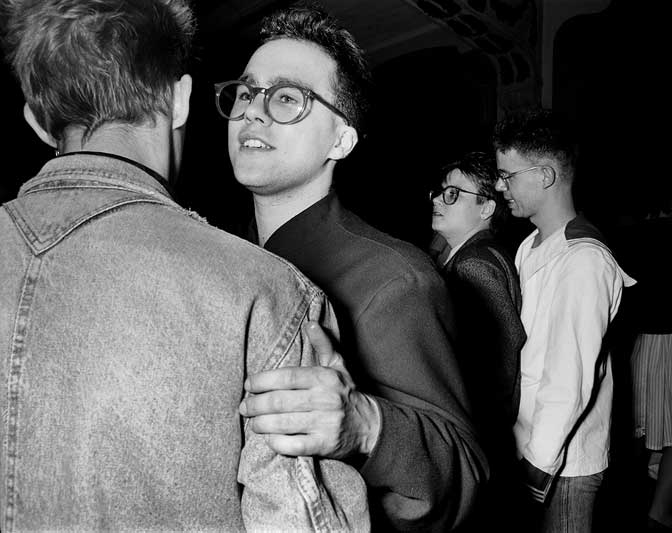
Travis Salway, a researcher with the BC Centre for Disease Control in Vancouver, has spent the last five years trying to figure out why gay men keep killing themselves.
“The defining feature of gay men used to be the loneliness of the closet,” he says. “But now you’ve got millions of gay men who have come out of the closet and they still feel the same isolation.”
We’re having lunch at a hole-in-the-wall noodle bar. It’s November, and he arrives wearing jeans, galoshes and a wedding ring.
“Gay-married, huh?” I say.
“Monogamous even,” he says. “I think they’re gonna give us the key to the city.”
Salway grew up in Celina, Ohio, a rusting factory town of maybe 10,000 people, the kind of place, he says, where marriage competed with college for the 21-year-olds. He got bullied for being gay before he even knew he was. “I was effeminate and I was in choir,” he says. “That was enough.” So he got careful. He had a girlfriend through most of high school, and tried to avoid boys—both romantically and platonically—until he could get out of there.
By the late 2000s, he was a social worker and epidemiologist and, like me, was struck by the growing distance between his straight and gay friends. He started to wonder if the story he had always heard about gay men and mental health was incomplete.
When the disparity first came to light in the ’50s and ’60s, doctors thought it was a symptom of homosexuality itself, just one of many manifestations of what was, at the time, known as “sexual inversion.” As the gay rights movement gained steam, though, homosexuality disappeared from the DSM and the explanation shifted to trauma. Gay men were being kicked out of their own families, their love lives were illegal. Of course they had alarming rates of suicide and depression. “That was the idea I had, too,” Salway says, “that gay suicide was a product of a bygone era, or it was concentrated among adolescents who didn’t see any other way out.”
And then he looked at the data. The problem wasn’t just suicide, it wasn’t just afflicting teenagers and it wasn’t just happening in areas stained by homophobia. He found that gay men everywhere, at every age, have higher rates of cardiovascular disease, cancer, incontinence, erectile dysfunction, allergies and asthma—you name it, we got it. In Canada, Salway eventually discovered, more gay men were dying from suicide than from AIDS, and had been for years. (This might be the case in the U.S. too, he says, but no one has bothered to study it.)
“We see gay men who have never been sexually or physically assaulted with similar post-traumatic stress symptoms to people who have been in combat situations or who have been raped,” says Alex Keuroghlian, a psychiatrist at the Fenway Institute’s Center for Population Research in LGBT Health.
Gay men are, as Keuroghlian puts it, “primed to expect rejection.” We’re constantly scanning social situations for ways we may not fit into them. We struggle to assert ourselves. We replay our social failures on a loop.
The weirdest thing about these symptoms, though, is that most of us don’t see them as symptoms at all. Since he looked into the data, Salway has started interviewing gay men who attempted suicide and survived.
“When you ask them why they tried to kill themselves,” he says, “most of them don’t mention anything at all about being gay.” Instead, he says, they tell him they’re having relationship problems, career problems, money problems. “They don’t feel like their sexuality is the most salient aspect of their lives. And yet, they’re an order of magnitude more likely to kill themselves.”

The term researchers use to explain this phenomenon is “minority stress.” In its most direct form, it’s pretty simple: Being a member of a marginalized group requires extra effort. When you’re the only woman at a business meeting, or the only black guy in your college dorm, you have to think on a level that members of the majority don’t. If you stand up to your boss, or fail to, are you playing into stereotypes of women in the workplace? If you don’t ace a test, will people think it’s because of your race? Even if you don’t experience overt stigma, considering these possibilities takes its toll over time.
For gay people, the effect is magnified by the fact that our minority status is hidden. Not only do we have to do all this extra work and answer all these internal questions when we’re 12, but we also have to do it without being able to talk to our friends or parents about it.
For more stories that stay with you, subscribe to our newsletter.
James, now a mostly-out 20-year-old, tells me that in seventh grade, when he was a closeted 12-year-old, a female classmate asked him what he thought about another girl. “Well, she looks like a man,” he said, without thinking, “so yeah, maybe I would have sex with her.”
Immediately, he says, he panicked. “I was like, did anyone catch that? Did they tell anyone else I said it that way?”
This is how I spent my adolescence, too: being careful, slipping up, stressing out, overcompensating. Once, at a water park, one of my middle-school friends caught me staring at him as we waited for a slide. “Dude, did you just check me out?” he said. I managed to deflect—something like “Sorry, you’re not my type”—then I spent weeks afterward worried about what he was thinking about me. But he never brought it up. All the bullying took place in my head.
“The trauma for gay men is the prolonged nature of it,” says William Elder, a sexual trauma researcher and psychologist. “If you experience one traumatic event, you have the kind of PTSD that can be resolved in four to six months of therapy. But if you experience years and years of small stressors—little things where you think, Was that because of my sexuality?—that can be even worse.”
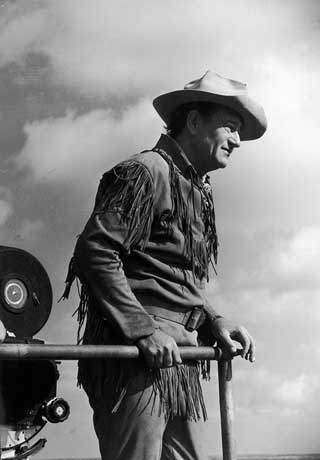
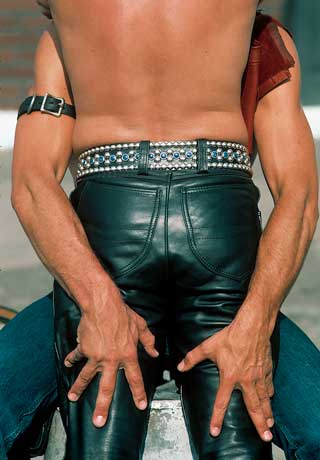
Or, as Elder puts it, being in the closet is like someone having someone punch you lightly on the arm, over and over. At first, it’s annoying. After a while, it’s infuriating. Eventually, it’s all you can think about.
And then the stress of dealing with it every day begins to build up in your body.
Growing up gay, it seems, is bad for you in many of the same ways as growing up in extreme poverty. A 2015 study found that gay people produce less cortisol, the hormone that regulates stress. Their systems were so activated, so constantly, in adolescence that they ended up sluggish as grownups, says Katie McLaughlin, one of the study’s co-authors. In 2014, researchers compared straight and gay teenagers on cardiovascular risk. They found that the gay kids didn’t have a greater number of “stressful life events” (i.e. straight people have problems, too), but the ones they did experience inflicted more harm on their nervous systems.
Annesa Flentje, a stress researcher at the University of California, San Francisco, specializes in the effect of minority stress on gene expression. All those little punches combine with our adaptations to them, she says, and become “automatic ways of thinking that never get challenged or turned off, even 30 years later.” Whether we recognize it or not, our bodies bring the closet with us into adulthood. “We don’t have the tools to process stress as kids, and we don’t recognize it as trauma as adults,” says John, a former consultant who quit his job two years ago to make pottery and lead adventure tours in the Adirondacks. “Our gut reaction is to deal with things now the way we did as children.”
Even Salway, who has devoted his career to understanding minority stress, says that there are days when he feels uncomfortable walking around Vancouver with his partner. No one’s ever attacked them, but they’ve had a few assholes yell slurs at them in public. That doesn’t have to happen very many times before you start expecting it, before your heart starts beating a little faster when you see a car approaching.
But minority stress doesn’t fully explain why gay men have such a wide array of health problems. Because while the first round of damage happens before we come out of the closet, the second, and maybe more severe, comes afterward.
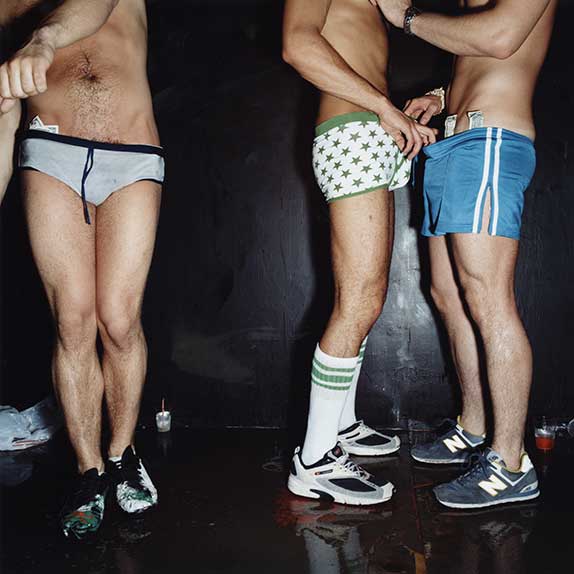
the fucking jungle.”
No one ever told Adam not to act effeminate. But he, like me, like most of us, learned it somehow.
“I never worried about my family being homophobic,” he says. “I used to do this thing where I would wrap a blanket around myself like a dress and dance around in the backyard. My parents thought it was cute, so they took a video and showed it to my grandparents. When they all watched the tape, I hid behind the couch because I was so ashamed. I must have been six or seven.”
By the time he got to high school, Adam had learned to manage his mannerisms so well that no one suspected him of being gay. But still, he says, “I couldn’t trust anyone because I had this thing I was holding. I had to operate in the world as a lone agent.”
He came out at 16, then graduated, then moved to San Francisco and started working in HIV prevention. But the feeling of distance from other people didn’t go away. So he treated it, he says, “with lots and lots of sex. It’s our most accessible resource in the gay community. You convince yourself that if you’re having sex with someone, you’re having an intimate moment. That ended up being a crutch.”
He worked long hours. He would come home exhausted, smoke a little weed, pour a glass of red wine, then start scanning the hookup apps for someone to invite over. Sometimes it would be two or three guys in a row. “As soon as I closed the door on the last guy, I’d think, That didn’t hit the spot, then I’d find another one.”
It went on like this for years. Last Thanksgiving, he was back home to visit his parents and felt a compulsive need to have sex because he was so stressed out. When he finally found a guy nearby who was willing to hook up, he ran to his parents’ room and started rifling through their drawers to see if they had any Viagra.
“So that was the rock-bottom moment?” I ask.
“That was the third or fourth, yeah,” he says.
Adam’s now in a 12-step program for sex addiction. It’s been six weeks since he’s had sex. Before this, the longest he had ever gone was three or four days.
“There are people who have lots of sex because it’s fun, and that’s fine. But I kept trying to wring it out like a rag to get something out of it that wasn’t in there—social support, or companionship. It was a way of not dealing with my own life. And I kept denying it was a problem because I had always told myself, ‘I’ve come out, I moved to San Francisco, I’m done, I did what I had to do as a gay person.’”
For decades, this is what psychologists thought, too: that the key stages in identity formation for gay men all led up to coming out, that once we were finally comfortable with ourselves, we could begin building a life within a community of people who’d gone through the same thing. But over the last 10 years, what researchers have discovered is that the struggle to fit in only grows more intense. A study published in 2015 found that rates of anxiety and depression were higher in men who had recently come out than in men who were still closeted.
“It’s like you emerge from the closet expecting to be this butterfly and the gay community just slaps the idealism out of you,” Adam says. When he first started coming out, he says, “I went to West Hollywood because I thought that’s where my people were. But it was really horrifying. It’s made by gay adults, and it’s not welcoming for gay kids. You go from your mom’s house to a gay club where a lot of people are on drugs and it’s like, this is my community? It’s like the fucking jungle.”

“I came out when I was 17, and I didn’t see a place for myself in the gay scene,” says Paul, a software developer. “I wanted to fall in love like I saw straight people do in movies. But I just felt like a piece of meat. It got so bad that I used to go to the grocery store that was 40 minutes away instead of the one that was 10 minutes away just because I was so afraid to walk down the gay street.”
The word I hear from Paul, from everyone, is “re-traumatized.” You grow up with this loneliness, accumulating all this baggage, and then you arrive in the Castro or Chelsea or Boystown thinking you’ll finally be accepted for who you are. And then you realize that everyone else here has baggage, too. All of a sudden it’s not your gayness that gets you rejected. It’s your weight, or your income, or your race. “The bullied kids of our youth,” Paul says, “grew up and became bullies themselves.”
“Gay men in particular are just not very nice to each other,” says John, the adventure tour guide. “In pop culture, drag queens are known for their takedowns and it’s all ha ha ha. But that meanness is almost pathological. All of us were deeply confused or lying to ourselves for a good chunk of our adolescence. But it’s not comfortable for us to show that to other people. So we show other people what the world shows us, which is nastiness.”
Every gay man I know carries around a mental portfolio of all the shitty things other gay men have said and done to him. I arrived to a date once and the guy immediately stood up, said I was shorter than I looked in my pictures and left. Alex, a fitness instructor in Seattle, was told by a guy on his swim team, “I’ll ignore your face if you fuck me without a condom.” Martin, a Brit living in Portland, has gained maybe 10 pounds since he moved there and got a Grindr message—on Christmas Day—that said: “You used to be so sexy. It’s a shame you messed it up.”
For other minority groups, living in a community with people like them is linked to lower rates of anxiety and depression. It helps to be close to people who instinctively understand you. But for us, the effect is the opposite. Several studies have found that living in gay neighborhoods predicts higher rates of risky sex and meth use and less time spent on other community activities like volunteering or playing sports. A 2009 study suggested that gay men who were more linked to the gay community were less satisfied with their own romantic relationships.
“Gay and bisexual men talk about the gay community as a significant source of stress in their lives,” Pachankis says. The fundamental reason for this, he says, is that “in-group discrimination” does more harm to your psyche than getting rejected by members of the majority. It’s easy to ignore, roll your eyes and put a middle finger up to straight people who don’t like you because, whatever, you don’t need their approval anyway. Rejection from other gay people, though, feels like losing your only way of making friends and finding love. Being pushed away from your own people hurts more because you need them more.
“The challenges of masculinity get magnified in a community of men,” Pachankis says. “Masculinity is precarious. It has to be constantly enacted or defended or collected. We see this in studies: You can threaten masculinity among men and then look at the dumb things they do. They show more aggressive posturing, they start taking financial risks, they want to punch things.”
This helps explain the pervasive stigma against feminine guys in the gay community. According to Dane Whicker, a clinical psychologist and researcher at Duke, most gay men report that they want to date someone masculine, and that they wished they acted more masculine themselves. Maybe that’s because, historically, masculine men have been more able to blend into straight society. Or maybe it’s internalized homophobia: Feminine gay men are still stereotyped as bottoms, the receptive partner in anal sex.
A two-year longitudinal study found that the longer gay men were out of the closet, the more likely they were to become versatile or tops. Researchers say this kind of training, deliberately trying to appear more masculine and taking on a different sex role, is just one of the ways gay men pressure each other to attain “sexual capital,” the equivalent of going to the gym or plucking our eyebrows.
“The only reason I started working out was so I would seem like a feasible top,” Martin says. When he first came out, he was convinced that he was too skinny, too effeminate, that bottoms would think he was one of them. “So I started faking all this hyper-masculine behavior. My boyfriend noticed recently that I still lower my voice an octave whenever I order drinks. That’s a remnant of my first few years out of the closet, when I thought I had to speak in this Christian Bale Batman voice to get dates.”
Grant, a 21-year-old who grew up on Long Island and now lives in Hell’s Kitchen, says he used to be self-conscious about the way he stood—hands on hips, one leg slightly cocked like a Rockette. So, his sophomore year, he started watching his male teachers for their default positions, deliberately standing with his feet wide, his arms at his sides.
These masculinity norms exert a toll on everyone, even their perpetrators. Feminine gay men are at higher risk of suicide, loneliness and mental illness. Masculine gay men, for their part, are more anxious, have more risky sex and use drugs and tobacco with greater frequency. One study investigating why living in the gay community increases depression found that the effect only showed up in masculine gay guys.
The second reason the gay community acts as a unique stressor on its members is not about why we reject each other, but how.
In the last 10 years, traditional gay spaces—bars, nightclubs, bathhouses—have begun to disappear, and have been replaced by social media. At least 70 percent of gay men now use hookup apps like Grindr and Scruff to meet each other. In 2000, around 20 percent of gay couples met online. By 2010, that was up to 70 percent. Meanwhile, the share of gay couples who met through friends dropped from 30 percent to 12 percent.
Usually when you hear about the shocking primacy of hookup apps in gay life—Grindr, the most popular, says its average user spends 90 minutes per day on it—it’s in some panicked media story about murderers or homophobes trawling them for victims, or about the troubling “chemsex” scenes that have sprung up in London and New York. And yes, those are problems. But the real effect of the apps is quieter, less remarked-upon and, in a way, more profound: For many of us, they have become the primary way we interact with other gay people.

“It’s so much easier to meet someone for a hookup on Grindr than it is to go to a bar by yourself,” Adam says. “Especially if you’ve just moved to a new city, it’s so easy to let the dating apps become your social life. It’s harder to look for social situations where you might have to make more of an effort.”
“I have moments when I want to feel desired and so I get on Grindr,” Paul says. “I upload a shirtless picture and I start getting these messages telling me I’m hot. It feels good in the moment, but nothing ever comes of it, and those messages stop coming after a few days. It feels like I’m scratching an itch, but it’s scabies. It’s just going to spread.”
The worst thing about the apps, though, and why they’re relevant to the health disparity between gay and straight men, is not just that we use them a lot. It is that they are almost perfectly designed to underline our negative beliefs about ourselves. In interviews that Elder, the post-traumatic stress researcher, conducted with gay men in 2015, he found that 90 percent said they wanted a partner who was tall, young, white, muscular and masculine. For the vast majority of us who barely meet one of those criteria, much less all five, the hookup apps merely provide an efficient way to feel ugly.
Paul says he’s “electrified waiting for rejection” as soon as he opens them. John, the former consultant, is 27, 6-foot-1 and has a six-pack you can see through his wool sweater. And even he says most of his messages don’t get replies, that he spends probably 10 hours talking to people on the app for every one hour he spends meeting for coffee or a hookup.
It’s worse for gay men of color. Vincent, who runs counseling sessions with black and Latino men through the San Francisco Department of Public Health, says the apps give racial minorities two forms of feedback: Rejected (“Sorry, I’m not into black guys”) and fetishized (“Hi, I’m really into black guys.”) Paihan, a Taiwanese immigrant in Seattle, shows me his Grindr inbox. It is, like mine, mostly hellos he has sent out to no reply. One of the few messages he received just says, “Asiiiaaaan.”
None of this is new, of course. Walt Odets, a psychologist who’s been writing about social isolation since the 1980s, says that gay men used to be troubled by the bathhouses in the same way they are troubled by Grindr now. The difference he sees in his younger patients is that “if someone rejected you at a bathhouse, you could still have a conversation afterwards. Maybe you end up with a friend out of it, or at least something that becomes a positive social experience. On the apps, you just get ignored if someone doesn’t perceive you as a sexual or romantic conquest.” The gay men I interviewed talked about the dating apps the same way straight people talk about Comcast: It sucks, but what are you gonna do? “You have to use the apps in smaller cities,” says Michael Moore, a psychologist at Yale. “They serve the purpose of a gay bar. But the downside is that they put all this prejudice out there.”
What the apps reinforce, or perhaps simply accelerate, is the adult version of what Pachankis calls the Best Little Boy in the World Hypothesis. As kids, growing up in the closet makes us more likely to concentrate our self-worth into whatever the outside world wants us to be—good at sports, good at school, whatever. As adults, the social norms in our own community pressure us to concentrate our self-worth even further—into our looks, our masculinity, our sexual performance. But then, even if we manage to compete there, even if we attain whatever masc-dom-top ideal we’re looking for, all we’ve really done is condition ourselves to be devastated when we inevitably lose it.
“We often live our lives through the eyes of others,” says Alan Downs, a psychologist and the author of The Velvet Rage, a book about gay men’s struggle with shame and social validation. “We want to have man after man, more muscles, more status, whatever brings us fleeting validation. Then we wake up at 40, exhausted, and we wonder, Is that all there is? And then the depression comes.”
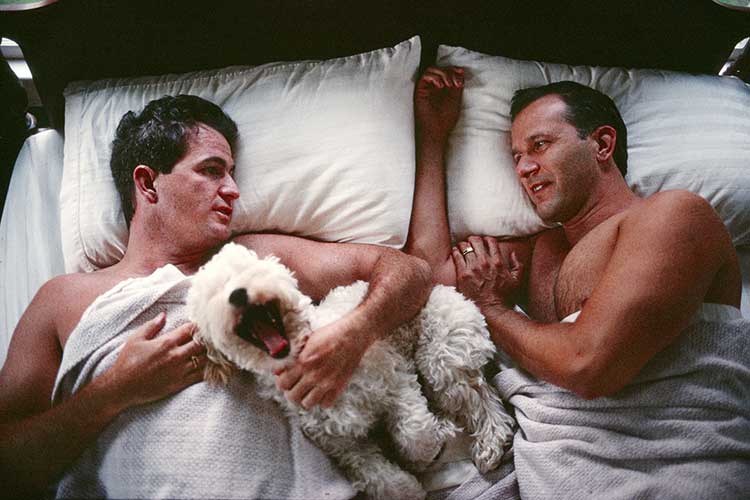
the source of our wit, our resilience,
dressing and dancing and karaoke.
Perry Halkitis, a professor at NYU, has been studying the health gap between gay people and straight people since the early ’90s. He has published four books on gay culture and has interviewed men dying of HIV, recovering from party drugs and struggling to plan their own weddings.
That’s why, two years ago, his 18-year-old nephew James showed up trembling at his doorstep. He sat Halkitis and his husband down on the couch and announced he was gay. “We told him, ‘Congratulations, your membership card and welcome package are in the other room,’” Halkitis remembers. “But he was too nervous to get the joke.”
James grew up in Queens, a beloved member of a big, affectionate, liberal family. He went to a public school with openly gay kids. “And still,” Halkitis says, “there was this emotional turmoil. He knew rationally that everything was going to be fine, but being in the closet isn’t rational, it’s emotional.”
Over the years, James had convinced himself that he would never come out. He didn’t want the attention, or to have to field questions he couldn’t answer. His sexuality didn’t make sense to him—how could he possibly explain it to other people? “On TV I was seeing all these traditional families,” he tells me. “At the same time, I was watching a ton of gay porn, where everyone was super ripped and single and having sex all the time. So I thought those were my two options: this fairy-tale life I could never have, or this gay life where there was no romance.”
James remembers the exact moment he decided to go into the closet. He must have been 10 or 11, dragged on a vacation to Long Island by his parents. “I looked around at our whole family, and the kids running around, and I thought, ‘I’m never going to have this,’ and I started to cry.”
I realize, the second he says it, that he is describing the same revelation I had at his age, the same grief. James’ was in 2007. Mine was in 1992. Halkitis says his was in 1977. Surprised that someone his nephew’s age could have the same experience he did, Halkitis decided his next book project would be about the trauma of the closet.
“Even now, even in New York City, even with accepting parents, the coming out process is challenging,” Halkitis says. “Maybe it always will be.”
So what are we supposed to do about it? When we think of marriage laws or hate crime prohibitions, we tend to think of them as protections of our rights. What’s less understood is that laws literally affect our health.
One of the most striking studies I found described the spike in anxiety and depression among gay men in 2004 and 2005, the years when 14 states passed constitutional amendments defining marriage as being between a man and a woman. Gay men in those states showed a 37 percent increase in mood disorders, a 42 percent increase in alcoholism and a 248 percent increase in generalized anxiety disorder.
The most chilling thing about those numbers is that the legal rights of gay people living in those states didn’t materially change. We couldn’t get married in Michigan before the amendment passed, and we couldn’t get married in Michigan after it passed. The laws were symbolic. They were the majority’s way of informing gay people that we weren’t wanted. What’s worse, the rates of anxiety and depression didn’t just jump in the states that passed constitutional amendments. They increased (though less dramatically) among gay people across the entire country. The campaign to make us suffer worked.
Now square that with the fact that our country recently elected a bright orange Demogorgon whose administration is publicly, eagerly attempting to reverse every single gain the gay community has made in the last 20 years. The message this sends to gay people—especially the youngest ones, just grappling with their identity—couldn’t be clearer and more terrifying.
Any discussion of gay mental health has to start with what happens in schools. Despite the progress taking place around them, America’s educational institutions remain dangerous places for kids, filled with aspiring frat boys, indifferent teachers and retrograde policies. Emily Greytak, the director of research for the anti-bullying organization GLSEN, tells me that from 2005 to 2015, the percentage of teenagers who said they were bullied for their sexual orientation didn’t fall at all. Only around 30 percent of school districts in the country have anti-bullying policies that specifically mention LGBTQ kids, and thousands of other districts have policies that prevent teachers from speaking about homosexuality in a positive way.
These restrictions make it so much harder for kids to cope with their minority stress. But luckily, this doesn’t require every teacher and every teenage lacrosse bro to accept gay people overnight. For the last four years, Nicholas Heck, a researcher at Marquette University, has been running support groups for gay kids in high schools. He walks them through their interactions with their classmates, their teachers and their parents, and tries to help them separate garden-variety teenage stress from the kind they get due to their sexuality. One of his kids, for example, was under pressure from his parents to major in art rather than finance. His parents meant well—they were just trying to encourage him into a field where he would encounter fewer homophobes—but he was already anxious: If he gave up on finance, was that surrendering to stigma? If he went into art and still got bullied, could he tell his parents about it?
The trick, Heck says, is getting kids to ask these questions openly, because one of the hallmark symptoms of minority stress is avoidance. Kids hear derogatory comments in the hall so they decide to walk down another one, or they put in earbuds. They ask a teacher for help and get shrugged off, so they stop looking for safe adults altogether. But the kids in the study, Heck says, are already starting to reject the responsibility they used to take on when they got bullied. They’re learning that even if they can’t change the environment around them, they’re allowed to stop blaming themselves for it.
So for kids, the goal is to hunt out and prevent minority stress. But what can be done for those of us who have already internalized it?
“There has been a lot of work with queer youth, but there’s no equivalent when you’re in your 30s and 40s,” Salway tells me. “I don’t even know where you go.” The problem, he says, is that we’ve built entirely separate infrastructures around mental illness, HIV prevention and substance abuse, even though all the evidence indicates that they are not three epidemics, but one. People who feel rejected are more likely to self-medicate, which makes them more likely to have risky sex, which makes them more likely to contract HIV, which makes them more likely to feel rejected, and so on.
In the last five years, as evidence of this interconnectedness has piled up, a few psychologists and epidemiologists have started to treat alienation among gay men as a “syndemic”: A cluster of health problems, none of which can be fixed on their own.

Pachankis, the stress researcher, just ran the country’s first randomized controlled trial of “gay-affirming” cognitive behavior therapy. After years of emotional avoidance, many gay men “literally don’t know what they’re feeling,” he says. Their partner says “I love you” and they reply “Well, I love pancakes.” They break it off with the guy they’re seeing because he leaves a toothbrush at their house. Or, like a lot of the guys I talked to, they have unprotected sex with someone they’ve never met because they don’t know how to listen to their own trepidation.
Emotional detachment of this kind is pervasive, Pachankis says, and many of the men he works with go years without recognizing that the things they’re striving for—having a perfect body, doing more and better work than their colleagues, curating the ideal weeknight Grindr hookup—are reinforcing their own fear of rejection.
Simply pointing out these patterns yielded huge results: Pachankis’ patients showed reduced rates of anxiety, depression, drug use and condom-less sex in just three months. He’s now expanding the study to include more cities, more participants and a longer timeline.
These solutions are promising, but they’re still imperfect. I don’t know if we’ll ever see the mental health gap between straight people and gay people close, at least not fully. There will always be more straight kids than gay kids, we will always be isolated among them, and we will always, on some level, grow up alone in our families and our schools and our towns. But perhaps that’s not all bad. Our distance from the mainstream may be the source of some of what ails us, but it is also the source of our wit, our resilience, our empathy, our superior talents for dressing and dancing and karaoke. We have to recognize that as we fight for better laws and better environments—and as we figure out how to be better to each other.
I keep thinking of something Paul, the software developer, told me: “For gay people, we’ve always told ourselves that when the AIDS epidemic was over we’d be fine. Then it was, when we can get married we’ll be fine. Now it’s, when the bullying stops we’ll be fine. We keep waiting for the moment when we feel like we’re not different from other people. But the fact is, we are different. It’s about time we accept that and work with it.”




/cdn0.vox-cdn.com/uploads/chorus_image/image/52634193/IASIP_1208_2216r.0.jpg)

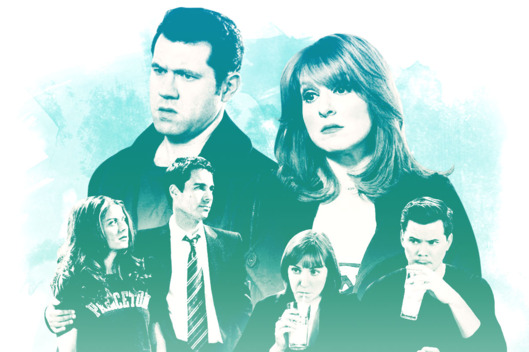
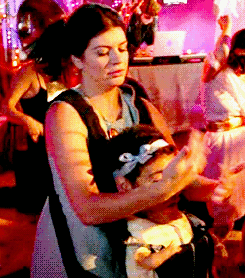

 That’s a whole different kettle of fish.
That’s a whole different kettle of fish. 